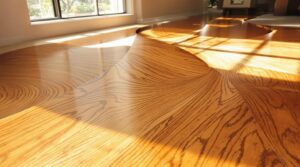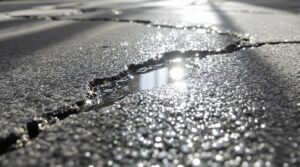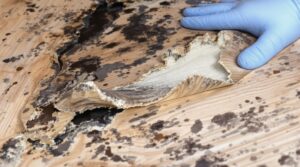A successful water leak insurance claim requires immediate action and methodical documentation. Upon discovering a leak, the policyholder must shut off the water supply, document the damage with photos and videos, and promptly notify their insurance provider. Creating a detailed inventory of damaged items, obtaining professional assessments, and maintaining organized repair receipts strengthens claim credibility. Understanding policy coverage limits and exclusions while working effectively with adjusters leads to ideal settlement outcomes. Further strategic steps can maximize claim success.
Key Takeaways
- Document the water damage immediately with photos, videos, and detailed notes before starting any cleanup or repairs.
- Shut off the main water supply and take immediate action to prevent further damage while maintaining evidence of the incident.
- Contact your insurance provider promptly with your policy number and a thorough description of the damage and mitigation steps taken.
- Create a detailed inventory of damaged items with estimated values, purchase dates, and supporting documentation like receipts.
- Consider hiring a public adjuster for complex claims to ensure thorough damage evaluation and maximize settlement potential.
Understanding Your Water Damage Coverage
Water damage claims represent one of the most common types of insurance claims filed by homeowners. Understanding the specific water damage types covered by standard homeowners insurance policies is essential for filing successful claims. Insurance typically covers sudden and accidental damage from internal sources, such as burst pipes, appliance leaks, and malfunctioning automatic fire protection systems.
Several key coverage exclusions exist that homeowners must recognize. Standard policies do not cover damage from flooding, groundwater seepage, or sewage backup. Additionally, damages resulting from poor maintenance, gradual deterioration, or neglect are excluded from coverage.
Homeowners should note that while internal water damage is generally covered, any water that originates from outside the home or touches the ground first is typically excluded. To maximize protection, homeowners can supplement their standard policy with optional coverages like flood insurance, sewer backup riders, and service line endorsements. These additional protections help fill significant gaps in standard coverage.
Immediate Steps After Discovering a Leak
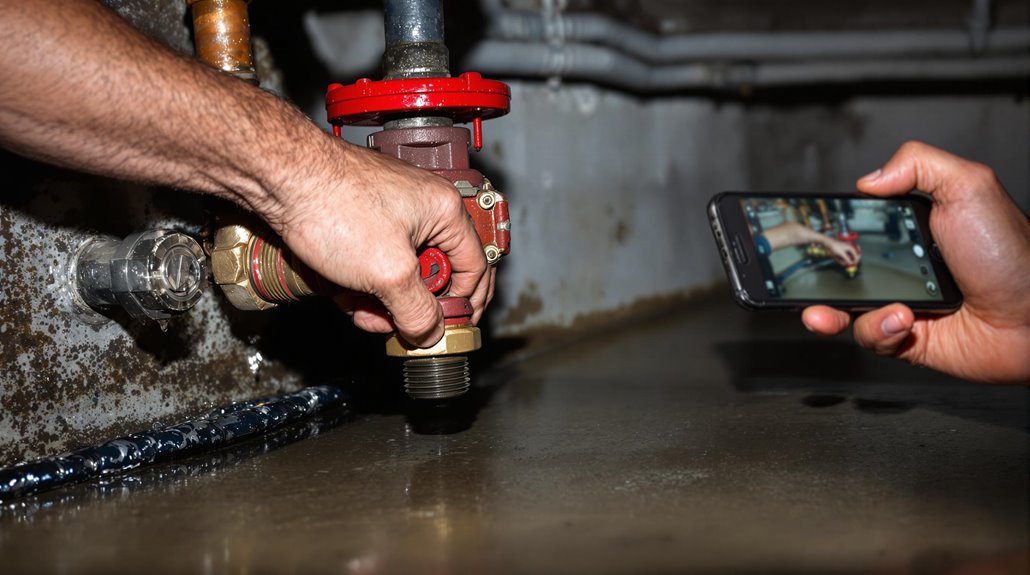
When a homeowner discovers a water leak, the first critical action is to immediately shut off the main water supply or nearest valve to prevent further damage.
Thorough documentation of the leak and resulting damage through detailed photographs, videos, and written descriptions provides essential evidence for the insurance claim process.
Swift notification to the insurance provider initiates the claims process and allows for proper guidance on next steps, including professional assessment and repairs.
Stop Water Flow Fast
Upon discovering a water leak, taking immediate action to stop the water flow becomes the highest priority to minimize property damage and financial loss.
The first critical step in emergency repairs involves locating and shutting off the main water supply valve, typically found near the water meter, in the basement, garage, or outside near the curb.
Property owners must turn all valves clockwise to guarantee complete closure and halt water flow.
For thorough leak detection, it's important to check for additional shut-off valves both inside and outside the property that may require closure.
This systematic approach prevents continued water damage while preparing for subsequent repair steps.
Homeowners should verify that all identified valves are fully closed, as partially closed valves may still allow water to flow and cause ongoing damage.
Document Everything Thoroughly
Proper documentation serves as the cornerstone of a successful water leak insurance claim, requiring property owners to gather extensive evidence immediately after discovering the damage.
Photo documentation should include both wide-angle shots depicting overall affected areas and detailed close-ups of specific damage points, accompanied by clear descriptions of each image.
A thorough damage assessment necessitates collecting multiple forms of evidence, including professional evaluations from water damage specialists, detailed repair estimates, and a meticulous inventory of affected belongings.
Property owners must maintain organized records of all communications with insurance representatives, contractors, and specialists, logging dates, times, and key details of each interaction.
This systematic approach to documentation strengthens the claim's validity and helps guarantee fair compensation for water-related damages.
Call Insurance Right Away
Beyond thorough documentation, swift communication with insurance providers stands as the immediate priority after discovering a water leak.
When initiating claim submission, policyholders must contact their insurer through available channels, whether by phone, online portal, or mobile application, ensuring they have their policy number readily accessible.
During initial insurance communication, individuals should provide a detailed account of the damage observed and any immediate containment measures implemented.
The conversation should include specific inquiries about the claims process, required documentation, and anticipated timeline.
Insurance providers typically require prompt notification to validate claims and prevent complications.
This initial contact establishes a formal record of the incident and enables insurers to guide policyholders through necessary steps while ensuring compliance with policy requirements.
Essential Documentation for Your Claim
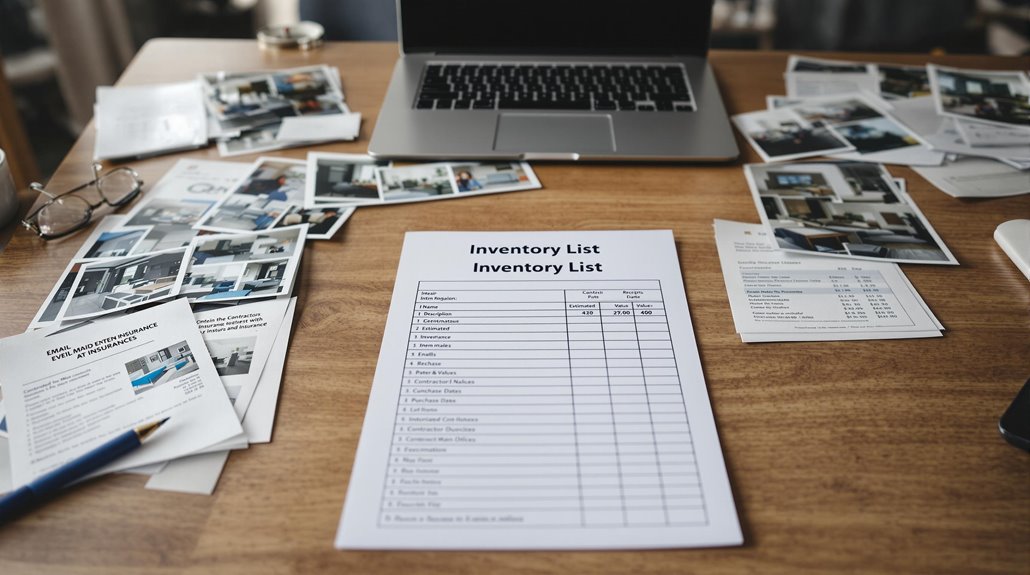
When filing a water leak insurance claim, thorough documentation serves as the foundation for a successful outcome. Understanding policy limits and claim timelines, homeowners must systematically gather evidence that substantiates their case.
The documentation process begins with extensive photographic and video evidence of the water damage source and affected areas. Claimants should create a detailed inventory of damaged items, including estimated values and purchase dates.
Professional assessments from plumbers or water damage specialists provide vital third-party validation of the damage extent. Essential records must include all repair receipts, contractor quotes, and emergency service invoices.
Homeowners should maintain damaged items until an insurance adjuster completes their review. Additionally, documenting incidental expenses such as temporary housing costs strengthens the claim.
All communication with insurance representatives should be preserved, and multiple angles of damage should be photographed to provide a complete visual record of the incident.
Working With Insurance Adjusters

When preparing to meet with an insurance adjuster, homeowners should compile extensive documentation of the water damage, including detailed photographs, repair estimates, and a chronological record of events.
A well-organized evidence file, containing professional assessments from plumbers or water damage specialists, strengthens the claim and demonstrates the property owner's thorough approach to the situation.
During negotiations with the adjuster, maintaining a professional demeanor while firmly presenting documented evidence increases the likelihood of reaching a fair settlement that accurately reflects the extent of damages and necessary repairs.
Document Everything Before Meeting
Before meeting with an insurance adjuster, homeowners must compile thorough documentation of the water damage to strengthen their claim position.
Extensive photographic evidence and a detailed damage timeline serve as essential elements in establishing the extent of the loss. Maintaining organized records of all professional assessments, repair estimates, and mitigation efforts demonstrates due diligence in addressing the situation.
- Take extensive photos and videos of the water source, affected areas, and all damaged property
- Create a chronological log of events, including when the leak was discovered and immediate actions taken
- Gather written reports from water damage specialists and contractors, including detailed cost estimates
- Collect receipts for emergency repairs, temporary accommodations, and other related expenses
Prepare Clear Evidence Files
A well-organized evidence file forms the cornerstone of a successful water leak insurance claim. Proper evidence organization requires systematic documentation of all damage-related materials, including detailed photo documentation of affected areas and the water source.
Homeowners should maintain a thorough folder containing timestamped photographs, professional inspection reports, and all receipts for temporary repairs or mitigation efforts.
The evidence file should include an itemized inventory of damaged property, complete with estimated values and purchase dates. Each document requires clear labeling and chronological arrangement for efficient review by the insurance adjuster.
Additionally, all correspondence with insurance representatives, contractors, and restoration professionals should be preserved, including emails, written communications, and detailed notes from phone conversations.
This methodical approach notably strengthens the claim's credibility.
Negotiate Professionally and Firmly
Successful water leak insurance claims require strategic negotiation with insurance adjusters to secure fair compensation. When engaging in negotiations, homeowners must understand common negotiation tactics used by insurers, such as lowball initial offers designed to anchor discussions.
Effective counteroffer strategies include documenting all communications, basing responses on concrete evidence, and maintaining a firm yet professional stance throughout the process.
- Never accept the first offer from the insurance company without thorough evaluation
- Present detailed documentation of damages and expenses to support counteroffers
- Maintain clear records of all conversations and correspondence with adjusters
- Consider engaging a licensed public adjuster for unbiased claim assessment and negotiation support
Understanding policy coverage limits and gathering supporting evidence strengthens the negotiating position.
Patience during negotiations often yields better results than rushing to settle.
Common Pitfalls to Avoid During Claims
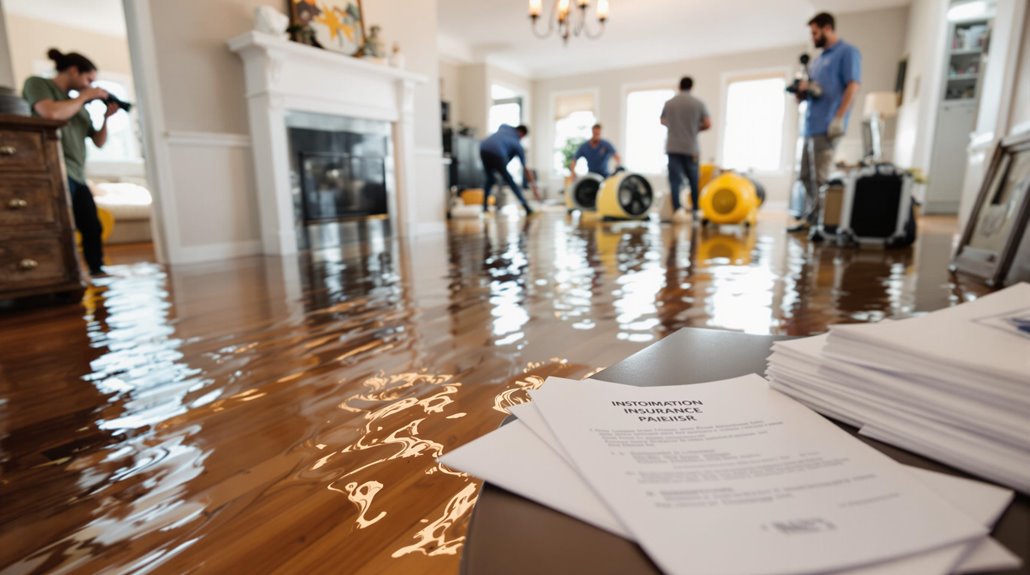
Making an insurance claim for water damage requires careful attention to detail and awareness of potential missteps that could jeopardize the claim's success. Among the most common mistakes is delayed reporting, which can violate policy requirements and complicate the claim timeline. Insurance providers typically mandate prompt notification and documentation of damage.
Insufficient documentation presents another significant obstacle, as insurers require thorough evidence including photographs, videos, and professional assessments.
Policy misunderstandings frequently lead to claim denials, particularly regarding coverage exclusions and specific terminology. Homeowners must thoroughly review and understand their policy terms.
Inadequate mitigation efforts can also invalidate claims. Failing to take immediate action to prevent further damage, such as shutting off water sources or engaging professional restoration services, may result in coverage denial.
Additionally, neglecting proper maintenance or failing to address hidden damage can lead to excluded coverage under policy terms.
Securing a Fair Settlement

While avoiding common pitfalls represents a key aspect of the claims process, securing a fair settlement demands strategic preparation and methodical execution. Effective settlement strategies include thorough documentation of all damages, obtaining multiple professional assessments, and maintaining detailed records of expenses.
Insurance adjusters rely heavily on documented evidence when determining settlement amounts, making extensive documentation essential for successful negotiations.
- Compile detailed photographic and video evidence of all water damage, including affected structural elements and personal property
- Obtain written assessments from licensed professionals, including plumbers and water damage specialists
- Track all related expenses meticulously, from emergency repairs to temporary accommodations
- Present organized documentation packages that clearly demonstrate the full scope of losses
Implementation of proper negotiation techniques often involves carefully reviewing settlement offers against documented expenses, identifying any coverage gaps, and presenting well-supported counteroffers when necessary.
Policyholders may benefit from professional assistance, such as public adjusters or legal counsel, to guarantee settlement terms adequately address all damages.
The Benefits Of Consulting A Public Adjuster
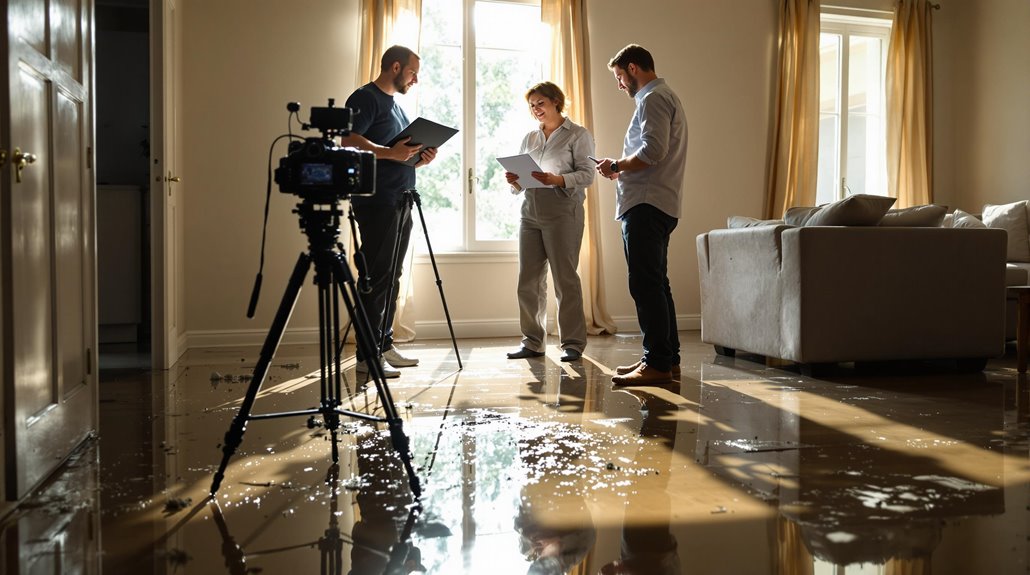
Public adjusters bring specialized expertise in insurance claims management, offering objective assessments of water damage that contribute to more accurate claim valuations.
Their professional knowledge streamlines the claims process through systematic documentation, efficient communication with insurers, and strategic presentation of evidence.
Studies indicate that claims handled by public adjusters often result in notably higher settlements compared to those processed without professional representation, making their services particularly valuable for substantial water damage cases.
Expertise In Insurance Claims
Since managing insurance claims can be a complex and challenging process, consulting a public adjuster offers significant advantages for policyholders seeking fair compensation for water leak damage.
Public adjusters possess extensive knowledge of insurance policy interpretation and claims process navigation, enabling them to identify all potential coverages and provisions within policies. Their expertise guarantees thorough documentation and effective presentation of evidence to insurance companies.
- Professional analysis of policy language and coverage entitlements
- Strategic documentation of water damage and associated losses
- Expert negotiation with insurance carriers to maximize settlements
- Efficient management of complex paperwork and claim requirements
Their professional representation allows policyholders to focus on recovery while guaranteeing their interests are protected through skilled advocacy and thorough claim management.
Objective Damage Assessment
A thorough damage assessment forms the cornerstone of successful water leak insurance claims, requiring meticulous documentation and expert analysis to establish the full scope of losses.
Public adjusters conduct extensive damage evaluations through detailed physical inspections, photographic evidence, and systematic documentation of affected areas. Their expertise enables them to identify both obvious and hidden water damage that might otherwise go unnoticed.
These professionals possess in-depth knowledge of insurance policies and understand how to align damage assessments with specific coverage terms.
Their unbiased, third-party evaluations strengthen claims by providing objective documentation that meets insurance company requirements.
Through professional assessment methods, public adjusters guarantee that all aspects of water damage are properly documented and quantified, leading to more accurate claim valuations and increased likelihood of fair compensation.
Streamlined Claim Process
Retaining a public adjuster considerably streamlines the water leak insurance claim process through systematic management of critical components.
The adjuster guarantees claim efficiency by handling all communications with insurers while maintaining meticulous paperwork accuracy throughout the documentation phase. Their expertise in negotiation tactics and industry protocols enables effective countering of underpayment attempts, resulting in settlements that thoroughly cover damages.
- Coordinates all necessary documentation and filing requirements with precision
- Manages ongoing communication between policyholder and insurance company
- Provides expert negotiation skills to secure fair compensation
- Alleviates policyholder stress by serving as primary point of contact
This systematic approach not only expedites the claims process but also maximizes the likelihood of a favorable outcome while allowing property owners to focus on restoration efforts rather than administrative complexities.
Higher Claim Payouts & Settlements
One of the most compelling advantages of employing a public adjuster lies in their ability to secure considerably higher claim payouts and settlements for water damage claims.
Their expertise in claim strategies and deep understanding of policy nuances enables them to maximize settlement outcomes through thorough damage evaluation and skilled negotiation.
Public adjusters utilize advanced assessment tools, including thermal imaging and moisture meters, to document both visible and concealed water damage.
Their thorough understanding of restoration costs and insurance procedures allows them to build robust claims that account for all damages.
Working on a contingency basis, these professionals leverage their negotiation expertise to counter insurance company tactics, ensuring settlements fully cover repairs, replacements, and additional living expenses.
Their specialized knowledge often results in notably higher compensation compared to policyholder-managed claims.
About The Public Claims Adjusters Network (PCAN)
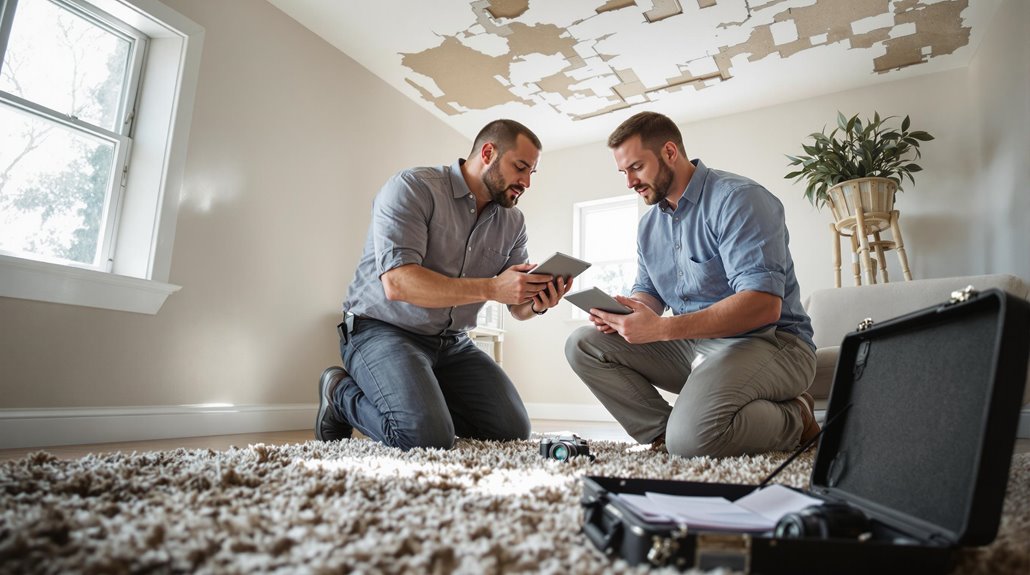
When dealing with water damage insurance claims, the Public Claims Adjusters Network (PCAN) serves as a professional organization of licensed public adjusters who work independently on behalf of policyholders.
These experts specialize in claims process navigation, ensuring detailed documentation and maximizing settlement outcomes. Public adjuster roles encompass extensive policy analysis, damage assessment, and skilled negotiations with insurance companies.
- Conducts detailed property damage evaluations to determine repair costs and scope
- Reviews insurance policies to identify all applicable coverage provisions
- Manages communication between policyholders and insurance companies
- Negotiates settlements based on documented evidence and policy terms
PCAN members operate under strict regulatory oversight, maintaining required licenses and adhering to state-mandated fee structures.
Their compensation model, typically based on a percentage of the final settlement, aligns their interests with achieving ideal results for clients. This structure motivates thorough claim preparation while providing professional representation throughout the entire claims process.
Frequently Asked Questions
Will My Insurance Rates Increase if I File a Water Leak Claim?
Filing a water leak claim typically results in insurance premiums increasing between 7-10%. Multiple claims within seven years can greatly impact future rates throughout the claim process.
How Long Do I Have After Discovering a Leak to File a Claim?
Time is of the essence: Standard claim deadlines require property owners to initiate reporting procedures within 48 hours of discovering water damage, though specific timeframes may vary by insurance policy.
Can I Choose My Own Contractor for Water Damage Repairs?
Insurance policies typically allow homeowners to select their own contractor for water damage repairs. This contractor selection grants control over the repair process while maintaining quality standards and documentation requirements.
Are Slow Leaks That Occurred Over Time Covered by Insurance?
Standard homeowners insurance typically excludes slow leak coverage for gradual damage occurring over time. However, specific endorsements like Hidden Water or Seepage coverage can protect against these otherwise uncovered losses.
What Happens if Mold Develops After the Initial Water Damage Claim?
Mold remediation and associated damages may be covered if resulting from the initially covered water event, subject to policy sublimits. Insurance coverage extends when mold develops as a direct consequence of covered water damage.

